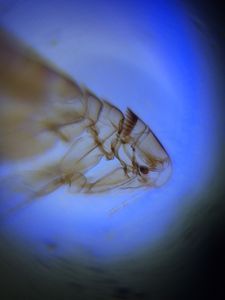Minerals with Cross-Polarized Light
 Feb 17, 2015 • 4:05 PM UTC
Feb 17, 2015 • 4:05 PM UTC Unknown Location
Unknown Location 140x Magnification
140x Magnification Fungi
Fungi
smarion
I work as a Staff Scientist at a science centre in Edmonton, AB, Canada.
5posts
0comments
1locations
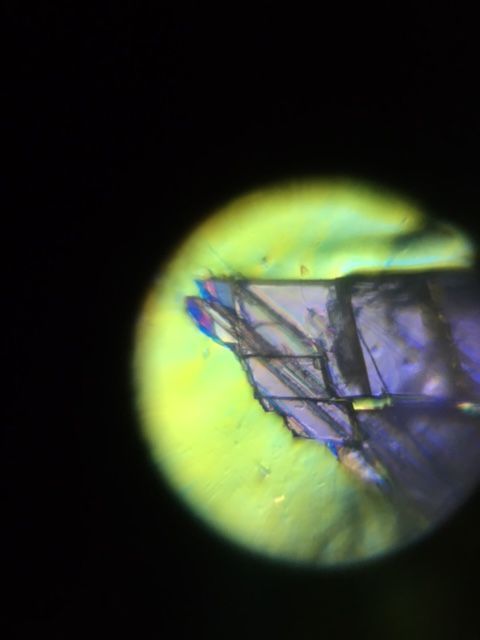
Using some minerals samples that we had lying around at work and low budget tools (my fingernail to scrape off pieces of the minerals), I looked at crystal structures with a cross-polarized light Foldscope (see this post for instructions).
First, some muscovite mica which forms in very thin sheets and has high birefringence (which is what gives us beautiful colours when put under cross-polarized light).
First, some muscovite mica which forms in very thin sheets and has high birefringence (which is what gives us beautiful colours when put under cross-polarized light).


Next, some celestite. I had never heard of this mineral before, but some quick googling taught me that it is the principal source of strontium. It has lower birefringence than muscovite but we still get some lovely colours.
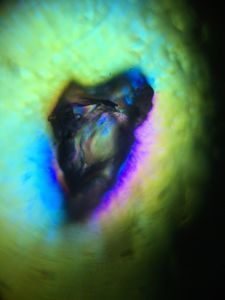
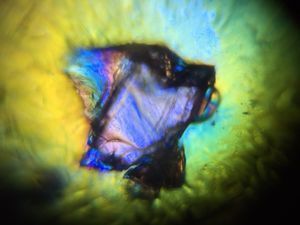
And lastly, my favourite, calcite. I was expecting great things from the calcite sample since I know that calcite has many special optical properties. I wasn’t disappointed. Calcite has very high birefringence compared to the other two minerals. And, of course, I had to bust out the high-magnification lens to capture the beautiful cleavage.
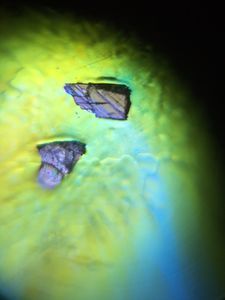
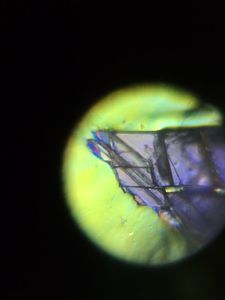
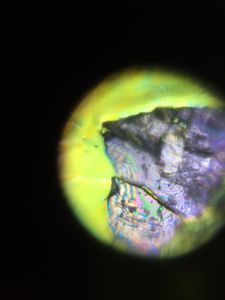
I did have a couple of issues while doing this activity. I believe they both stem from the samples being too thick. The first issue I had was with focus. The foldscope seemed to have a hard time focussing on the samples and I think it’s because the sample was too close to the lens. The other problem was that the sliding mechanism kept getting stuck on chunks of mineral. Perhaps with better tools and more careful slide preparation, these can be easily avoided.
Sign in to commentNobody has commented yet... Share your thoughts with the author and start the discussion!
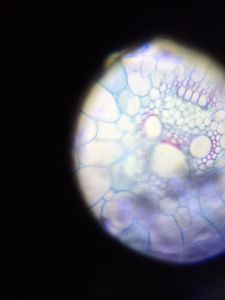
 0 Applause
0 Applause 0 Comments
0 Comments